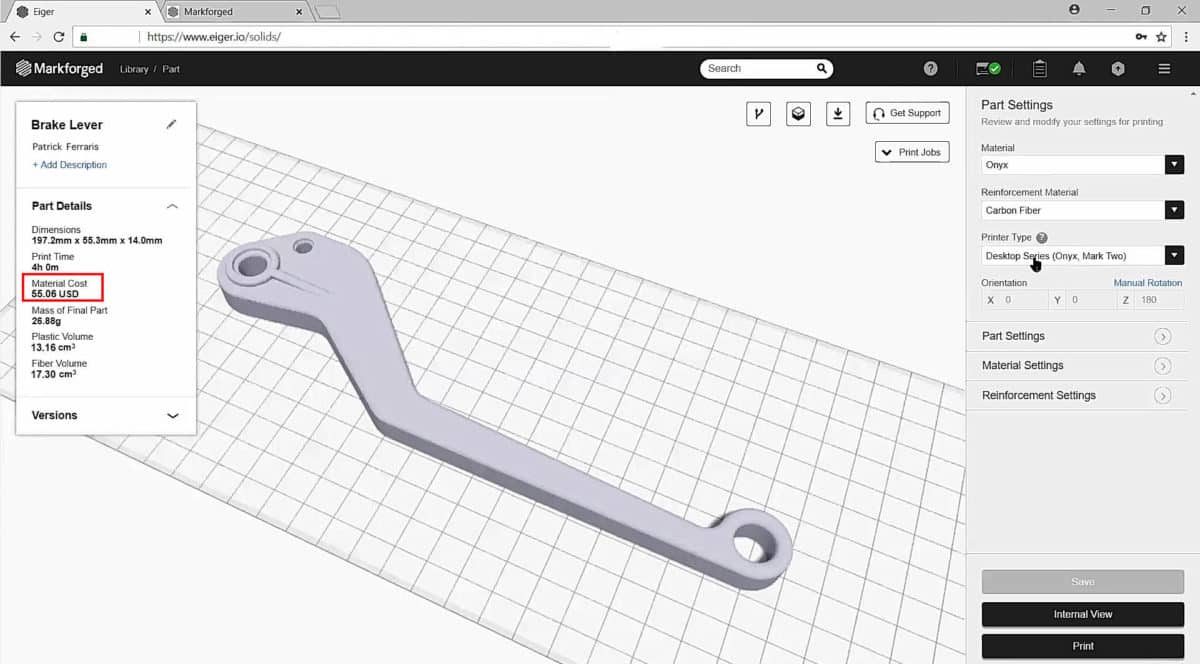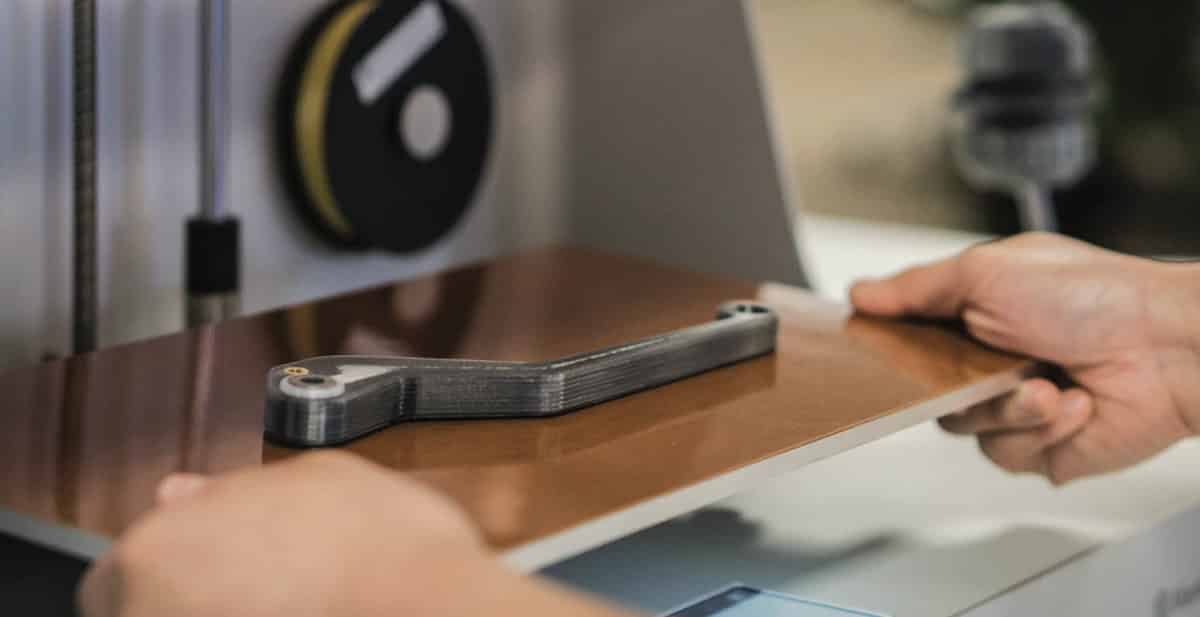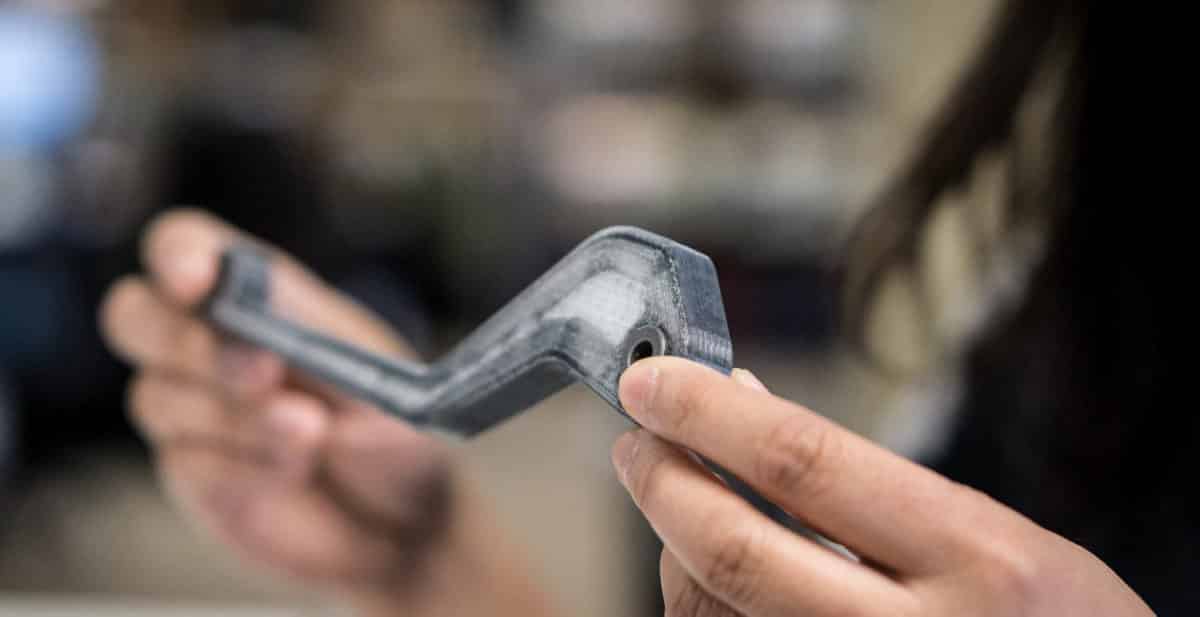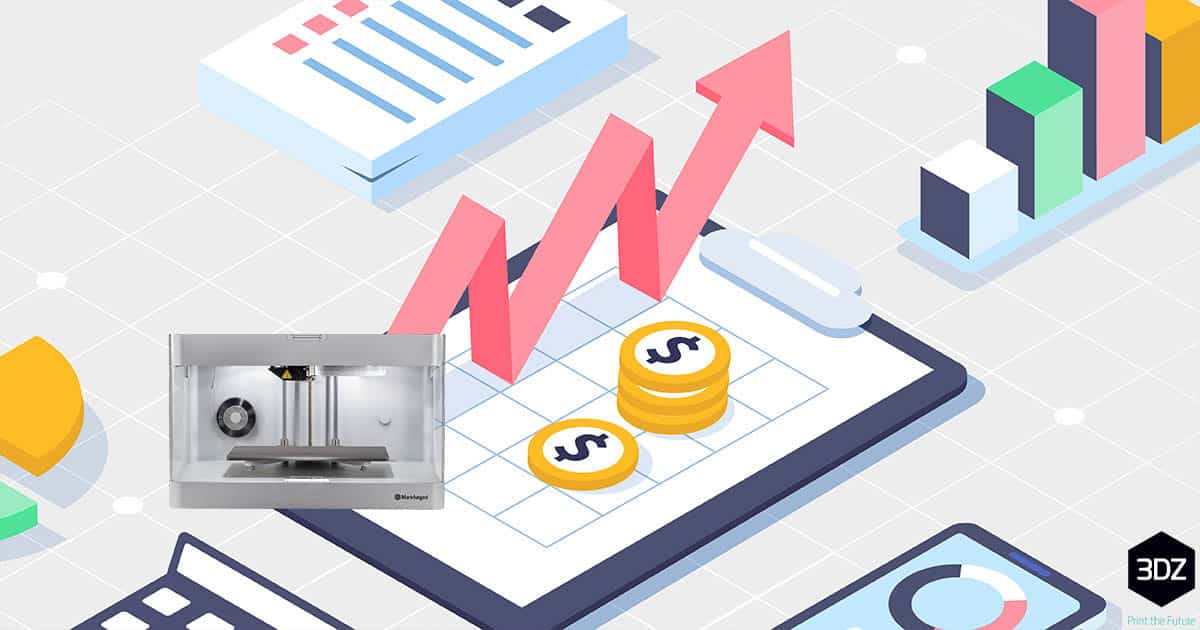Why should you choose 3D printing in-house?
Internal 3D printing has become a mature technology suitable for the production of visual models, functional prototypes, production aids and finished products.
In fact, on the desktop of a product designer, engineer or manufacturer, a 3D printer is a powerful tool. It allows you to test designs quickly and cost-effectively and produce highly customized parts on demand.
More importantly, for businesses, desktop 3D printers are an attractive option because of their low purchase and operating costs compared to other options.
In-house 3D printing is therefore a versatile solution for a wide range of applications. However, when thinking about investing in a 3D printer, the points usually come down to two questions: Which one to choose? and is it beneficial to your business?
Which 3D printer should I choose?
Choosing a high quality professional machine will save you money because of its reliability and ease of use. A reliable 3D printer maximizes uptime and increases the success rate of printing, and if it’s also easy to use, it reduces the time needed for use, maintenance and training. Desktop printers can therefore meet your industrial needs.
But before you invest in internal 3D printing, it’s important to calculate costs and answer some key questions:
- How do I compare 3D desktop printing with current costs?
- What is the balance point of a 3D printer?
- How long before the savings made offer a full return on investment?
Calculate the production cost of 3D printing
A fairly simple logical step. In fact, most of the design software on the market has a cost estimation option such as Eiger, Markforged software. Estimating the cost of a single piece is an important step in deciding whether or not to invest in a 3D printer.
As mentioned, Eiger software estimates the cost of printing the part in real time.
By printing reinforced composite fibers, you can design and print industrial parts at a lower cost and time.
Here is an example of a brake lever printed in 3D on the Mark Two 3D printer with Onyx material and reinforced with carbon fiber.
In the red box you can see an estimate of $55, or about €47. The estimate takes into account the amount of plastic and carbon fiber in your part to calculate the cost of production.
The more fibres you have in your room, the higher the printing cost will be. In this case, the cost of the part is relatively high, being heavily reinforced with carbon fiber.

Determination of costs using standard methods
Once the price of our 3D molded part is known, we compare this cost with that of other production methods, such as CNC. This type of part is generally machined: we have considered a third party production department to get an estimate of the production costs.
Standard” production costs vary depending on the quantities produced. In fact, we have two price ranges: for less than 100 pieces produced, the unit cost to produce this piece is 169 € and for more than 100 pieces produced, the unit cost becomes 100 €.
These costs may vary depending on the machining service or manufacturing method chosen.

The comparison
Calculate the break-even point
Comparing the CNC machining method with the 3D printing method, you save 122 € per piece (CNC production cost – 3D printing cost is 169 € – 47 € = 122 € = 122 €).
With this number you can define the number of pieces needed to compensate for the cost of the 3D printer.
Now, if you assume that you only print this part, you will have to print 111 parts to amortize the 3D machine:
Cost of the 3D printer/economy obtained= parts needed to compensate for the cost of the 3D printer
The calculation: 13 499 €/122 = 111 pieces.
ROI calculation
It is also very interesting to know what your ROI would be for internal 3D printing of this part, if you buy a 3D printer.
Also, it is important to know that the more different parts you print, the higher the return on investment.
In fact, you need to focus on the potential of 3D printing to maximize your investment, one of its benefits is the versatility with which you can print a large number of different parts.
A concrete example for calculating the ROI
ROI = 100% * (Investment profit – Investment cost) / Investment cost
For this example, let’s imagine we want to produce 400 pieces.
First of all, you need to calculate the return on investment of a piece: CNC production cost – 3D printing cost is 169 € – 47 € = 122 €).
As mentioned, the cost of CNC production would be 100 € (because we want to produce more than 100 pieces) – 47 €= 53 €.
Here you save 53 € per piece (the figure is different from the 122 € calculated above because the production exceeds 100 pieces produced, the cost of processing then goes from 169 to 100 € per piece).
Then we went on to calculate the total investment gain: 53 € * 400 pieces = 21,200 €.
ROI: return on investment
It is assumed that the investment cost is 13,499 €, which is the price of the 3D printer in our case.
Then, we proceed with the calculations to know the ROI:
ROI = 100% * (Investment Gain – Investment Cost) / Investment Cost
So:
RE = 100% * (21 200 € – 13 499 €) / 13 499 €
This gives us a total return on investment: 7,701 € (21 200 – 13 499). So:
RE = 100%* 7 7 01 € / 13 499 €
RE = 100%* 0.5704
ROI = 57.04%.
This number means that the 3D printer is already profitable (ROI is positive) but also that it has returned 57.04% of its price to the company that purchased the printer. In 400 pieces produced, the machine is already refunded and has already brought the money.
Moreover, we have not taken into account the delivery times and costs in the calculation of the ROI, normally necessary in the case of traditional production.
In fact, the internalisation of the production process offered by the acquisition of a 3D printer makes it possible to produce everything directly and thus eliminate these additional costs.

Why invest in 3D printers?
Reduce costs
As with any purchase decision, the decision to purchase your 3D printers in-house or off-site is a matter of profitability.
Save time
What if you could get the products to market months faster? Or reduce the delivery time of your products by a few days or weeks? 3D printing simplifies traditional prototyping and workflows, saving time and outperforming the competition.
Transfer
Today, 3D printing allows the production of volumes of several tens of thousands of pieces with economic rationality. This was not the case until a few years ago. It is clearly an opportunity to bring back to Europe projects that once went to laboratories around the world, such as China or India.
Best results
3D printing allows you to create more iterations, fail faster, and get better finished products. Finding and correcting design defects quickly also avoids costly design reviews and tool changes in production.
Complex geometries and customization
Some objects do not exist today because they cannot be removed from the mould. With 3D printing these objects come to life because additive manufacturing allows you to produce layer by layer, while freeing yourself from the limits of subtractive production.
Availability
A 3D printer in the office or studio is always available for production on demand, with additional benefits for your business. Creating custom models, accessories or spare parts can reduce order costs in a production facility, while in-house production allows a just-in-time approach to your inventory, eliminating storage costs.
Communication
The availability of high quality prototypes and components allows you to communicate better with customers, suppliers and other interested parties. Avoid confusion and costly mistakes by reducing the risk of intellectual property loss or theft.
Efficiency and effectiveness
The main advantage for most companies using internal 3D printing is the speed and efficiency it brings to the design process. Instead of waiting for design iterations to be completed and delivered, designers can see the latest version of their product in a matter of hours. This allows multiple iterations to be performed in a shorter period of time.
IP protection
The internal creation of parties means that there will be no need to transfer intellectual property (IP) to third parties, thereby reducing the risk of IP loss or theft.
And the result?
A competitive advantage for your company, thanks to cheaper product development, more refined design and shorter lead times.
What are you waiting for? Contact us to speak to one of our experts!



